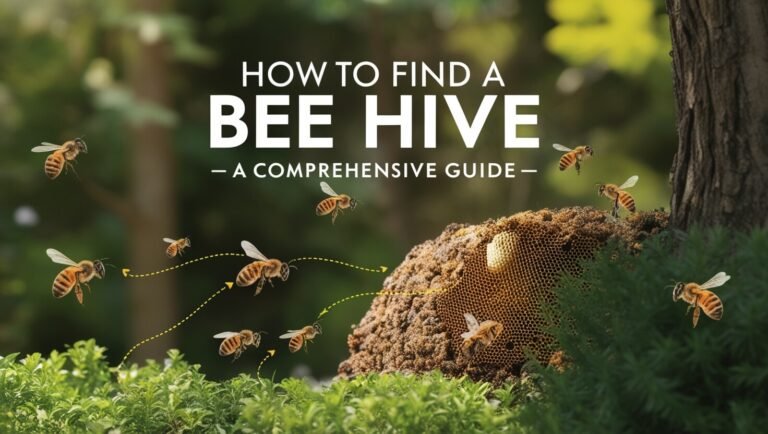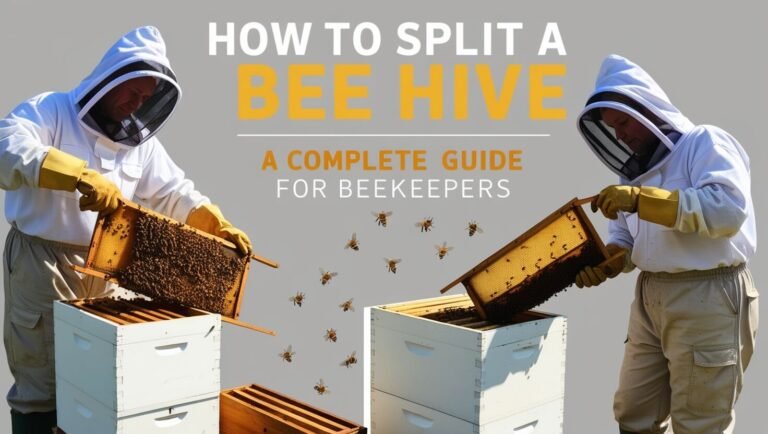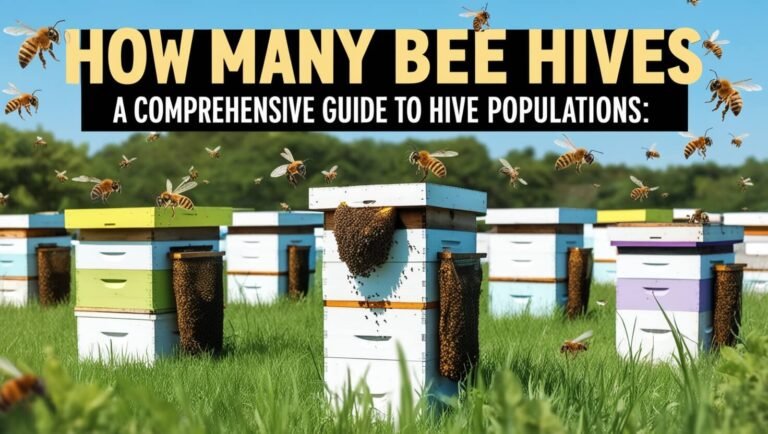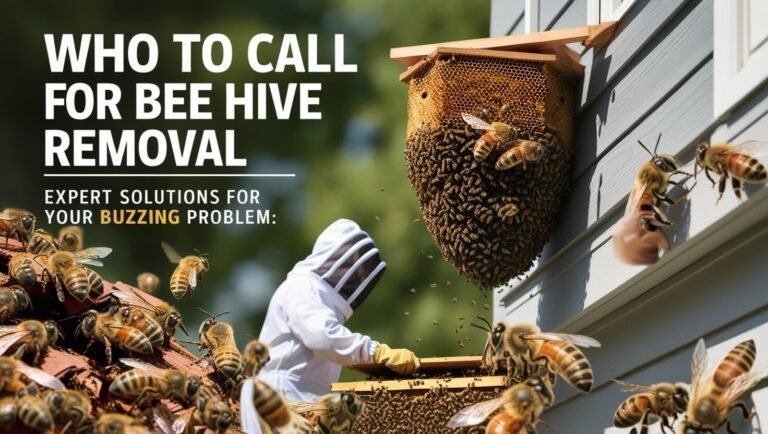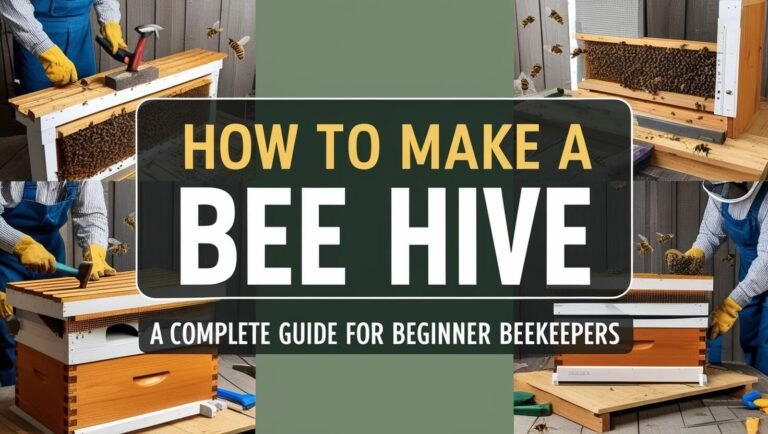How Long Does a Bee Hive Last? A Comprehensive Guide

Bee hives are fascinating structures that play a crucial role in our ecosystem. But how long does a bee hive actually last? On average, a well-maintained bee hive can last anywhere from 2 to 5 years, though some have been known to persist for decades under ideal conditions. However, the lifespan of a bee hive depends on various factors, including environmental conditions, bee health, and human intervention. In this comprehensive guide, we’ll explore the intricacies of bee hive longevity and what influences their duration.
The Lifecycle of a Bee Hive
Understanding the lifecycle of a bee hive is essential to grasp its potential lifespan. Let’s break down the key stages:
Establishing a New Colony
A new bee hive begins with a swarm of bees led by a queen. This process typically occurs in the spring when:
- A mature colony becomes overcrowded
- A new queen emerges and takes part of the existing colony with her
- Beekeepers intentionally split a hive to create a new colony
Once the swarm finds a suitable location, they begin building comb and establishing their new home. This initial phase is critical and can determine the long-term success of the hive.
Growth and Development Stages
After establishment, the hive goes through several growth and development stages:
- Foundation building: Workers construct honeycomb for brood rearing and food storage.
- Population expansion: The queen lays eggs, and the colony’s population grows rapidly.
- Resource gathering: Forager bees collect nectar, pollen, and other essential resources.
- Honey production: Excess nectar is converted into honey for long-term storage.
As the colony matures, it becomes more resilient and better equipped to handle challenges.
Factors Affecting Hive Longevity
Several key factors influence how long a bee hive will last:
- Queen bee health and productivity
- Availability of food sources
- Presence of diseases or parasites
- Environmental conditions
- Human intervention (both positive and negative)
Each of these factors plays a crucial role in determining whether a hive will thrive for years or struggle to survive its first season.
Lifespan of Different Bee Types in a Hive
The longevity of a bee hive is closely tied to the lifespans of its individual members. Let’s examine the typical lifespans of different bee types within a hive:
Queen Bee Longevity
The queen bee is the heart of the colony, and her lifespan significantly impacts the overall longevity of the hive. On average, a queen bee can live for:
- 2-3 years in a managed hive
- Up to 5 years in some cases
However, beekeepers often replace queens every 1-2 years to maintain optimal egg-laying capacity and colony health.
Worker Bee Lifespan
Worker bees have much shorter lives compared to the queen:
- During active seasons (spring/summer): 4-6 weeks
- During less active periods (fall/winter): 4-6 months
The constant turnover of worker bees means that the hive’s population is continually renewed, contributing to its overall longevity.
Drone Bee Duration
Drone bees, whose primary purpose is to mate with queens from other colonies, have the shortest lifespan:
- Active season: 4-8 weeks
- Expelled from the hive before winter
While drones play a crucial role in genetic diversity, their short lifespan doesn’t directly impact the longevity of their home hive.
Natural Factors Influencing Bee Hive Duration
Nature plays a significant role in determining how long a bee hive will last. Let’s explore some of the key natural factors:
Environmental Conditions
The environment in which a hive is located can greatly affect its lifespan:
- Climate: Moderate climates tend to support longer-lasting hives, while extreme temperatures can stress the colony.
- Rainfall: Adequate rainfall supports plant growth and nectar production, benefiting the hive.
- Wind exposure: Hives sheltered from strong winds are less likely to suffer damage or stress.
Bees are adaptable, but consistent exposure to harsh conditions can shorten a hive’s lifespan.
Availability of Food Sources
A diverse and abundant food supply is crucial for hive longevity:
- Nectar-rich flowers: Provide energy for daily activities and honey production.
- Pollen sources: Essential for brood rearing and bee nutrition.
- Water access: Necessary for various hive functions and temperature regulation.
Hives with year-round access to diverse food sources tend to last longer and remain healthier.
Predators and Pests
Natural threats can significantly impact a hive’s lifespan:
- Bears: Can destroy hives while searching for honey.
- Small mammals: Mice and shrews may invade hives, especially in winter.
- Birds: Some species prey on bees, affecting forager populations.
- Insects: Wasps, hornets, and some beetle species can attack or infiltrate hives.
While strong colonies can defend against many threats, persistent predation can weaken or destroy a hive over time.
Human Impact on Bee Hive Longevity
Human activities have a profound influence on how long bee hives last, both positively and negatively:
Beekeeping Practices
Proper beekeeping can significantly extend a hive’s lifespan:
- Regular inspections to catch and address issues early
- Providing additional food when natural sources are scarce
- Managing pests and diseases proactively
- Ensuring adequate space for colony growth
Conversely, neglect or improper practices can lead to premature hive failure.
Pesticide Use and Its Effects
The widespread use of pesticides in agriculture and gardening poses a serious threat to bee hives:
- Acute poisoning: Can quickly kill large numbers of bees
- Sublethal effects: May impair navigation, foraging ability, and reproduction
- Contamination of hive products: Can accumulate in honey and wax, affecting colony health
Hives exposed to high levels of pesticides often have shorter lifespans and may collapse entirely.
Urban Development and Habitat Loss
As human populations expand, bee habitats are often compromised:
- Loss of natural foraging areas
- Fragmentation of bee-friendly landscapes
- Increased exposure to pollution and artificial light
Urban hives can thrive with proper management, but habitat loss remains a significant challenge to wild and managed hives alike.
Signs of a Healthy, Long-lasting Bee Hive
Identifying the signs of a healthy hive can help predict its potential longevity:
Population Size and Dynamics
A thriving hive should have:
- A strong, stable population throughout the active season
- Balanced age distribution among worker bees
- Noticeable population growth in spring and early summer
Consistent population levels are a good indicator of a hive’s long-term prospects.
Brood Pattern and Production
Healthy brood production is crucial for hive longevity:
- Consistent egg-laying pattern by the queen
- Compact brood areas with few empty cells
- Presence of all stages of brood (eggs, larvae, pupae)
A strong brood pattern ensures a constant supply of new workers, contributing to the hive’s longevity.
Honey and Pollen Stores
Adequate food stores are essential for long-term survival:
- Sufficient honey reserves, especially before winter
- Diverse pollen stores for nutrition
- Visible nectar processing and honey capping activity
Hives with ample, diverse food stores are better equipped to handle challenges and last longer.
Common Threats to Bee Hive Survival
Several threats can shorten the lifespan of a bee hive:
Diseases and Parasites
Various ailments can affect hive health and longevity:
- Varroa mites: A major threat that can decimate colonies if left unchecked
- American and European Foulbrood: Bacterial diseases that can destroy entire hives
- Nosema: A fungal parasite that affects bee digestion and lifespan
Regular monitoring and treatment are essential to prevent these issues from shortening a hive’s life.
Colony Collapse Disorder
This phenomenon, characterized by the sudden loss of worker bees, can rapidly end a hive’s life:
- Causes are not fully understood but may include:
- Pesticide exposure
- Parasites and pathogens
- Nutritional stress
- Environmental changes
While less common now than in the past, CCD remains a concern for hive longevity.
Climate Change Impact
Changing climate patterns pose new challenges to bee hive survival:
- Altered flowering times disrupting food availability
- Increased frequency of extreme weather events
- Shifts in pest and disease patterns
Adapting to these changes is crucial for maintaining long-lasting hives in the future.
Extending the Life of a Bee Hive
Beekeepers and bee enthusiasts can take several steps to help extend the life of a hive:
Proper Hive Maintenance
Regular care is essential for longevity:
- Conduct frequent inspections to catch issues early
- Keep the hive clean and free of debris
- Repair or replace damaged components promptly
- Ensure proper ventilation and moisture control
Well-maintained hives are more resilient and likely to last longer.
Supplemental Feeding
Providing additional nutrition when necessary can support hive health:
- Offer sugar syrup during nectar dearths
- Provide pollen substitutes when natural pollen is scarce
- Ensure access to clean water sources
Proper nutrition helps the colony withstand stress and maintain productivity.
Pest and Disease Management
Proactive management of health threats is crucial:
- Implement integrated pest management strategies
- Use appropriate treatments for identified diseases
- Practice good hygiene to prevent the spread of pathogens
Keeping pests and diseases in check can significantly extend a hive’s lifespan.
Seasonal Variations in Bee Hive Longevity
The challenges and activities of a bee hive change with the seasons, affecting its long-term survival:
Spring and Summer Peak Activity
During warmer months, hives are most active:
- Rapid population growth
- Intense foraging and honey production
- Potential for swarming and colony reproduction
This period is crucial for establishing the resources and strength needed for year-round survival.
Fall Preparation
Autumn is a critical time for preparing the hive for winter:
- Reducing hive size to conserve heat
- Storing sufficient honey for winter months
- Removing excess moisture to prevent mold growth
Proper fall management sets the stage for winter survival and long-term hive health.
Winter Survival Strategies
Winter presents unique challenges to hive longevity:
- Clustering for warmth conservation
- Careful use of stored resources
- Minimal brood rearing to conserve energy
Hives that successfully navigate winter are more likely to thrive in the following years.
Wild Bee Hives vs. Managed Hives
The lifespan of bee hives can vary significantly between wild and managed colonies:
Differences in Lifespan
Wild hives often face more challenges:
- Greater exposure to environmental stressors
- Less protection from predators and pests
- No human intervention during crises
Managed hives, with proper care, can often outlast their wild counterparts.
Natural Selection vs. Human Intervention
The forces shaping hive longevity differ between wild and managed colonies:
- Wild hives evolve through natural selection, potentially developing resilience over time
- Managed hives benefit from human care but may rely more on intervention for survival
Both approaches have merits, and understanding their differences can inform better beekeeping practices.
The Role of Queen Replacement in Hive Longevity
The queen bee’s health and productivity are central to a hive’s lifespan:
Natural Supersedure
Bees naturally replace aging or failing queens:
- Workers raise new queen cells when they sense the current queen is faltering
- This process ensures continuity but can be risky if not successful
Natural supersedure can extend a hive’s life but doesn’t always occur at optimal times.
Beekeeper-Initiated Requeening
Many beekeepers proactively replace queens to maintain hive vitality:
- Typically done every 1-2 years
- Allows for selection of desired genetic traits
- Can help prevent swarming and maintain strong egg-laying rates
Regular requeening can significantly extend the functional lifespan of a hive.
Monitoring and Assessing Bee Hive Health
Regular evaluation is key to maintaining long-lasting hives:
Regular Inspections
Routine checks help catch and address issues early:
- Examine brood patterns and overall population
- Check for signs of disease or pest infestation
- Assess food stores and space needs
Consistent monitoring allows for timely interventions that can extend hive life.
Technology in Hive Management
Modern tools can provide valuable insights into hive health:
- Remote monitoring systems for temperature and humidity
- Hive scales to track weight changes indicating honey production or food consumption
- Acoustic monitoring to assess colony activity levels
These technologies can help beekeepers make informed decisions to support hive longevity.
The Economic and Ecological Importance of Long-lasting Bee Hives
The duration of bee hives has far-reaching impacts beyond the bees themselves:
Pollination Services
Long-lived hives provide consistent pollination:
- Essential for agricultural productivity
- Support wild plant reproduction and biodiversity
- Contribute to food security and ecosystem health
Stable, long-lasting hives are crucial for maintaining these vital services.
Honey Production
Established hives are typically more productive:
- Higher honey yields from experienced foragers
- More efficient use of resources and energy
- Consistent production year after year
The economic value of honey production increases with hive longevity.
Biodiversity Support
Healthy, enduring bee colonies contribute to overall ecosystem health:
- Support diverse plant communities through pollination
- Provide food sources for other wildlife
- Contribute to the genetic diversity of bee populations
The longer a hive survives, the greater its positive impact on local biodiversity.
FAQs About Bee Hive Longevity
Let’s address some common questions about how long bee hives last:
Can a bee hive last forever?
While no hive lasts forever, some have been known to persist for decades under ideal conditions. However, most hives have a practical lifespan of 2-5 years, after which they may require significant intervention or replacement to continue.
How often do bee hives need to be replaced?
In managed apiaries, beekeepers often replace hive components as needed:
- Frames and foundation: Every 3-5 years
- Bottom boards and outer covers: As they show wear, typically 5-10 years
- Complete hive replacement: Usually only necessary in cases of severe damage or disease
Wild hives may persist in the same location for many years if conditions remain favorable.
What’s the average lifespan of a managed bee hive?
With proper care, a managed bee hive can last:
- 2-5 years on average
- Up to 10 years or more with excellent management and favorable conditions
The actual lifespan depends on various factors, including the skill of the beekeeper, environmental conditions, and the overall health of the bee population.
Let’s Complete: Nurturing Sustainable Bee Hives for the Future
Understanding the factors that influence bee hive longevity is crucial for both beekeepers and environmental stewards. By providing proper care, monitoring for threats, and creating bee-friendly environments, we can help ensure that these vital pollinators continue to thrive for years to come.
Long-lasting bee hives not only produce more honey and provide consistent pollination services but also contribute to the overall health of our ecosystems. As we face challenges like climate change and habitat loss, nurturing sustainable bee populations becomes increasingly important.
Whether you’re a seasoned beekeeper or simply an admirer of these industrious insects, remember that every action to support bee health contributes to the longevity of hives and the countless benefits they provide. By working together to create favorable conditions for bees, we can look forward to a future where healthy, long-lasting hives continue to buzz with activity, supporting both human needs and natural ecosystems for generations to come.

